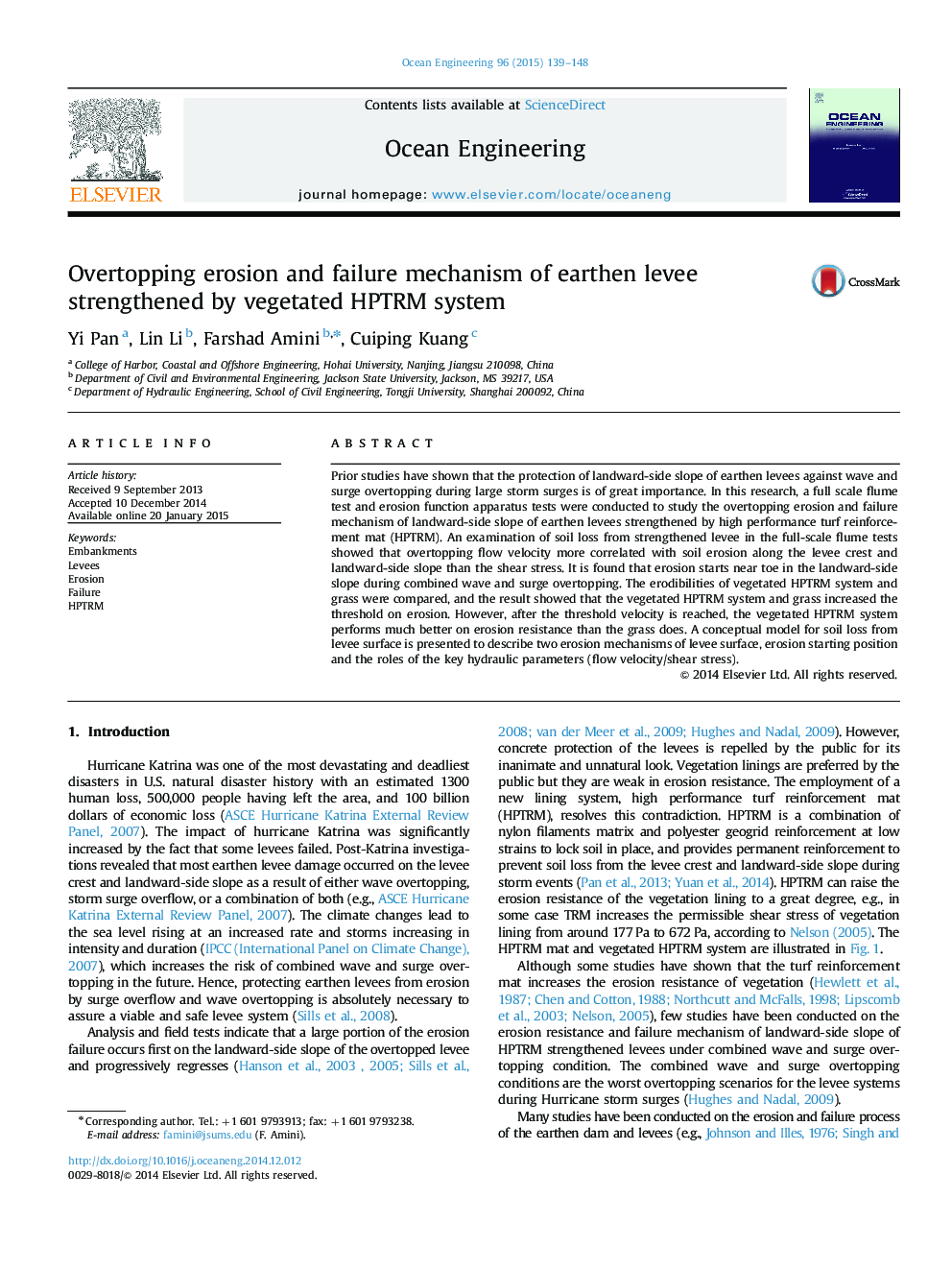| Article ID | Journal | Published Year | Pages | File Type |
|---|---|---|---|---|
| 8065698 | Ocean Engineering | 2015 | 10 Pages |
Abstract
Prior studies have shown that the protection of landward-side slope of earthen levees against wave and surge overtopping during large storm surges is of great importance. In this research, a full scale flume test and erosion function apparatus tests were conducted to study the overtopping erosion and failure mechanism of landward-side slope of earthen levees strengthened by high performance turf reinforcement mat (HPTRM). An examination of soil loss from strengthened levee in the full-scale flume tests showed that overtopping flow velocity more correlated with soil erosion along the levee crest and landward-side slope than the shear stress. It is found that erosion starts near toe in the landward-side slope during combined wave and surge overtopping. The erodibilities of vegetated HPTRM system and grass were compared, and the result showed that the vegetated HPTRM system and grass increased the threshold on erosion. However, after the threshold velocity is reached, the vegetated HPTRM system performs much better on erosion resistance than the grass does. A conceptual model for soil loss from levee surface is presented to describe two erosion mechanisms of levee surface, erosion starting position and the roles of the key hydraulic parameters (flow velocity/shear stress).
Keywords
Related Topics
Physical Sciences and Engineering
Engineering
Ocean Engineering
Authors
Yi Pan, Lin Li, Farshad Amini, Cuiping Kuang,
